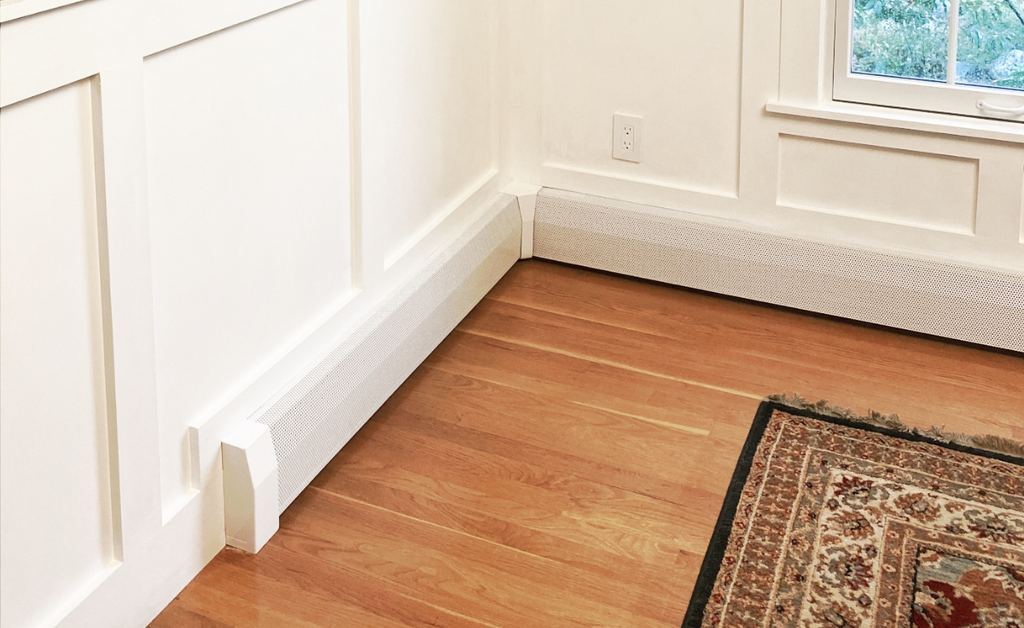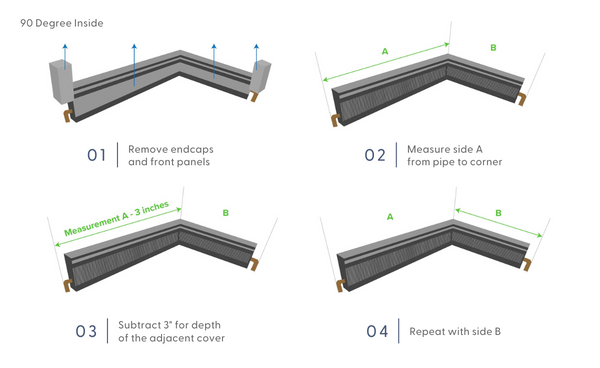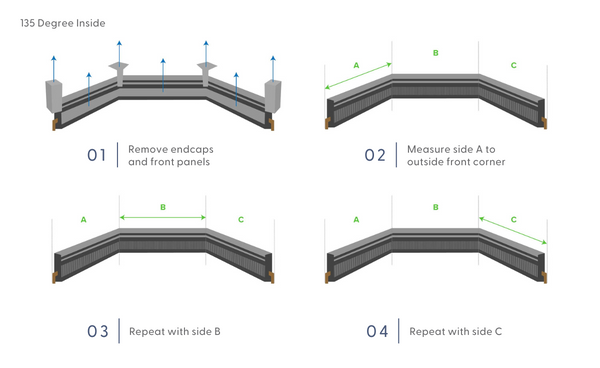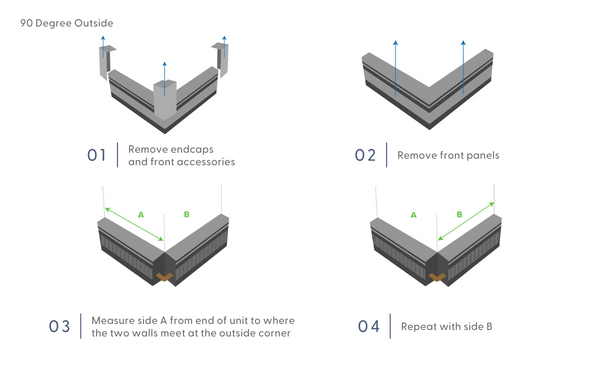How to Measure a Baseboard Heater Corner

Measuring for Baseboarders• replacement covers is straightforward until you’re backed into a corner,--literally. Then you may run into a few questions and a couple of terms you might not have heard before.
Come with us on a walkthrough of baseboard heater corners. You’ll be an expert in no time.
Things to Know about Baseboard Heater Corners
All corners fit into a couple of categories: the angle of the corner and which direction the corner points. Here’s what you need to know.
Corner Angles: 90 or 135 Degrees
The 90-degree corner is the most typical type of corner encountered, as many corners in homes or offices form right angles. These corners typically resemble the letter L.
The other angle found in structures are 135-degree corners. These are much less common than 90-degree corners and are usually found at bay window placements or other “bump-out” type architecture.
Type of Corner: Baseboard Heater Inside Corner & Outside Corner
Inside corners are those that point away from the room. These are the four corners you find in any standard square room. The corners point away from the center of the room.
In contrast, outside corners angle toward the room. You might see this in an open format space where, for instance, a kitchen connects to a dining room. A wall can provide partial separation in an area even though the room is not completely enclosed. The result is a corner that juts out into the space, or points into the room.
Baseboard Heater Corner Checklist
✅ Inside Corner – The corner folds inward, like most corners in the inside of a room.
✅ Outside Corner – The corner sticks outward, like on a hallway or fireplace bump-out.
✅ End Cap Near a Corner? – If your heater ends just before a corner, you may need both an end cap and a corner cover.
Not sure? Grab a piece of scrap paper and lay it flat against the corner. If it folds inward, it’s an inside corner. If it bends outward, that’s an outside corner.

How to Measure Baseboard Heater Corners Cover
Now that you’ve identified what type of corner you’re dealing with, measuring is easy as pie. Here’s what you do.
For 90-Degree Baseboard Heater Inside Corners
- Remove existing endcaps and cover panels from the heater.
- Measure from the pipe at the far end all the way to the wall.
- Subtract 3 inches from this measurement.
Repeat the measurement process for the unit on the opposite wall, following the same steps.

When dealing with more than one 90-degree inside corner for a single heater unit (forming a U shape), for the longest wall, measure from wall to wall and subtract a total of 6 inches. For the shorter walls, measure from the far end all the way to the wall and subtract 3. Repeat for both short walls.
For 135-Degree Inside Corners
- Remove the existing endcaps and front panels.
- It is best to measure from where the front plates will meet—usually located 2.5-3” out from the backplate/wall.
- No deductions are necessary.

For 90-Degree and 135-Degree Outside Baseboard Heater Corner Covers
- Remove end caps and front panels.
- Measure from the far end of the heater to the point where the two walls meet at the outside corner.
- No deduction of 3 inches is necessary since the outside corner piece attaches differently from the inside corner piece. The outside corner piece extends beyond the wall junction and clips to the end of the panels.

For more details, see our measuring guide.
Baseboard Heater Corner FAQs
Do I need a special cover for an inside corner baseboard heater?
Yes. Inside corners require a corner connector that fits snugly between two cover panels and ensures a seamless transition.
What if my heater ends right before a corner?
You’ll want to install an end cap at the end of the cover, plus a corner connector where the wall turns. This keeps things secure and tidy.
Can I cut baseboard heater covers to fit around corners?
Yes—Baseboarders covers are DIY-friendly and can be trimmed to fit, but always measure twice before cutting. Corner pieces make most cuts unnecessary.
More Questions?
Have more questions about baseboard heater corners? Visit our corner FAQs to find everything from style selection to installation.
